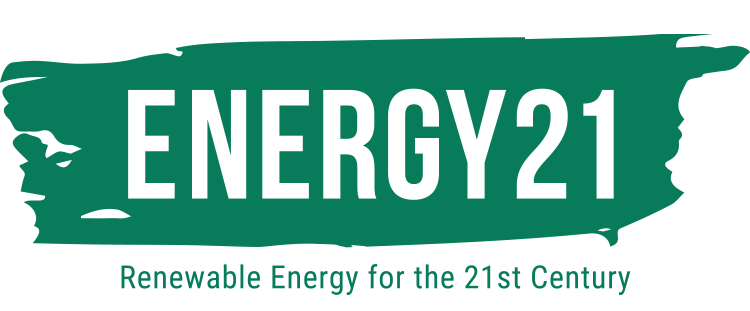
With every newly discovered energy source, we have witnessed some remarkable economic developments. In the 19th century, the major source of energy was coal and steel, whereas the 20th century saw the rise of oil and electricity. Both these inventions opened windows of opportunities for humans to do things better and faster. Today, our lives depend highly on electrical sources of energy. Its history traces back to the second industrial revolution and at present, consumes somewhat 150,000 TWh energy annually. A century ago, this number was significantly lower, which indicates the notable development and demand of this particular energy system in the modern times. In fact, today, over 40% of the primary energy is utilized for electricity production and the remaining is an investment in its transformation and refinement.
The Challenge – A Non-Sustainable Energy System
With development accelerating at a fast pace across the globe, the electrical energy system shows consequential limitations. The primary setback of this modern energy system is that it’s excessively carbonized and presently, its energy consumption is up to 80% of the overall carbon dioxide emission. This is a serious environmental issue that has grabbed the polemical spotlight in the last couple of years. Additionally, fossil fuel reserves are not distributed equally around the world, that further stresses the degree of dependency on it. Lastly, it is highly inefficient because around 60% of the extracted fossil fuel goes to waste; half of the extracted fuel gets lost in producing electricity and the rest is used in heating systems of combustion engines.
While there are influential risk factors and imbalances representing the uncertainty of the transformation, the electrical source also carries opportunities to change the future for the better.
Reasons Why the Future Is Heading Towards Electric Energy System

The major impediments that limit the growth of the electric energy system can be tackled in two steps to ensure sustainability and economic growth. The first step is to decarbonize the power sectors with renewable energies and, the second is to electrify the end use of energy on a large scale. If we tackle the challenges with these fundamental approaches, there are several advantages of an electric renewable source of energy. Below are three primary benefits of the new paradigm: –
- Renewable energies will direct the power sector decarbonization. Additionally, electrifying the end-user will allow transformation of other conventional fossil-based use of energy to clean electricity.
- Wind and solar while not equally, are distributed across the globe. The accessible reserves correspond to three times of the overall fossil fuels that are retrievable from the ground, and they renew naturally.
- With the power sector majorly relying on renewable energies and electrification of the primary use of alternative energies, the shift to an electrically renewable source could double the efficiency of the energy system.
The New Energy Phenomenon for 21st Century

The prominent underlying question here is whether this transformation will result in a sustainable and economical energy system that will augment economic development?
Various studies and researches have revealed that this shift to a completely renewable energy system would not significantly accelerate the overall current capital expenses directed towards energy production. Additionally, renewable energy production has very low operating expenses, generally varying from 2 to 4 times lesser than the traditional energy producing technologies. When the conventional fossil-fuel based energy use is electrified, the optimized efficiency proves to be worth the expense. Therefore, this new paradigm has a notable potential to generate more accessible energy catering towards an economic development.
The Growing Consensus across the World
With many leading companies moving towards this potential future, the advantages of renewable electrical energy system have led to a growing accordance. According to BNEF, by the year 2040, around 50% of global capacity could be compensated by a renewable source of energy with electric cars dominating more than half of the annual car sales. The Energy Transition Commission has reported that with electrification, there could be a reduction of 25% in carbon dioxide emission by 2040. Additionally, a recent report by Shell states that by 2070, the net carbon dioxide emission could be brought to zero by the effective adoption of an electrical energy system.
Hewlett-Packard has partnered with Schneider Electric to help them reduce greenhouse emissions to 40% by the year 2020. Organizations across the globe have realized the substantial future prospects this system beholds, and are taking all essential measures to be ahead in this transformation.
A Challenging Conversion
It is obvious that the future is going to be electric. The transition towards it, however, is the topic of discussion. Surprisingly the biggest challenge here is not supply-side of the transformation, even though this is what grabbed major headlines. Renewable energies are naturally distributed and this combined with local consumption. With renewable electric energy system, there will be a huge revolution in the way people use energy.
Presently, an electric renewable system is under extensive evolution to analyze where and how energy is being used, as well as the extent to which it can be self-powered locally. For example, Fairfield, a town in Connecticut utilizes a microgrid that has the ability to “island” or disconnect from the central grid if the utility power is lost in case of emergency. This allows the town to acquire around 120% of its high demand power during a crisis. Therefore, rather than merely catering to supply, the focus should also be directed towards the way energy demands of the habitats would be met, especially during emergency situations. With effective strategies and efficient resources, we can move towards a future dominated by an electrically renewable energy system that will offer environmental sustainability and an optimized economic development.
1 thought on “Reasons Why the Future Will Be All Electric”